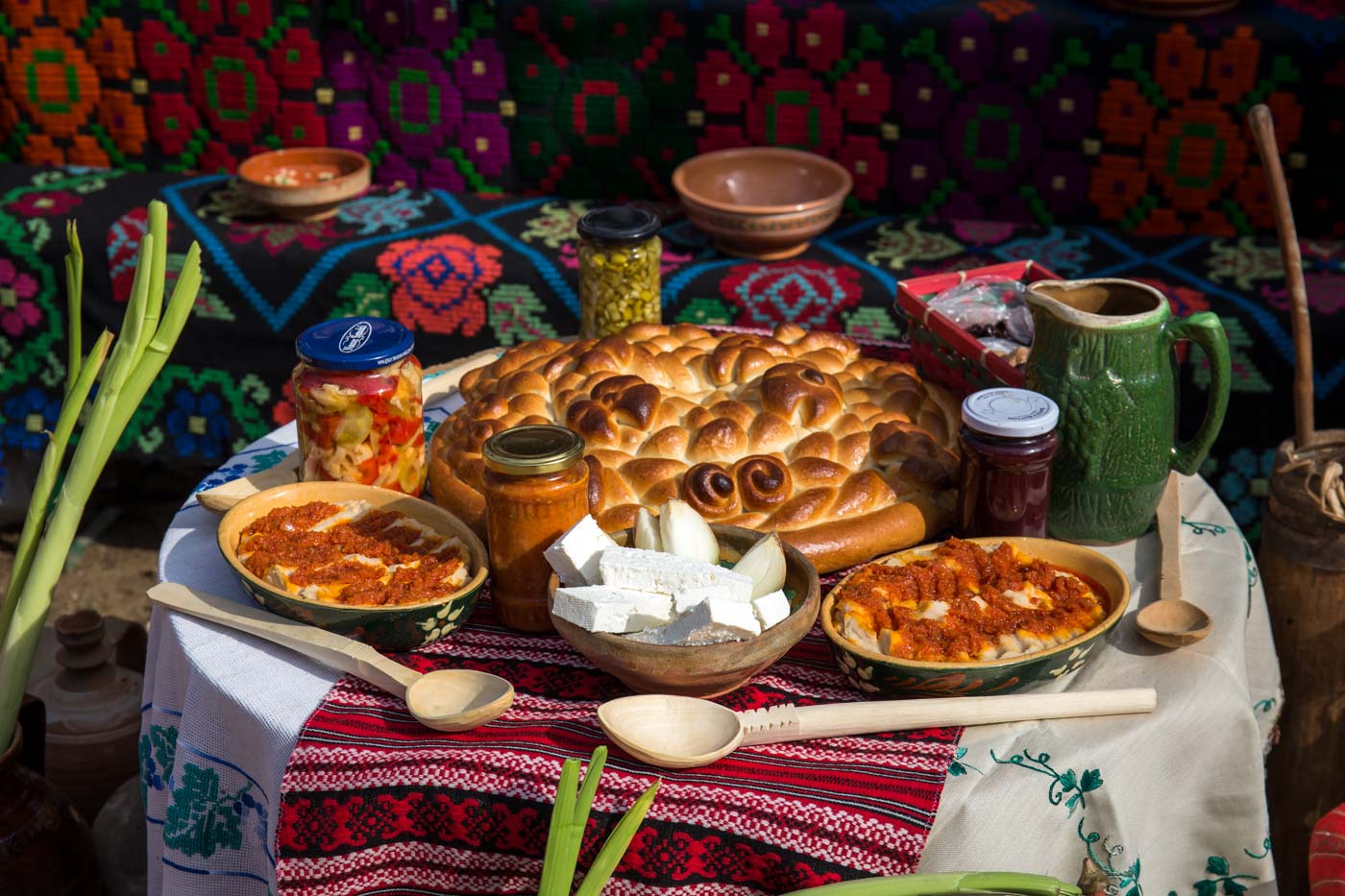Romanian traditional food is a delightful and diverse blend of flavors, reflecting the country’s rich history, regional influences, and agricultural abundance. From hearty stews to sweet pastries, Romanian cuisine offers a unique gastronomic experience. Here’s a taste of some iconic Romanian dishes:
- Mămăligă: Often considered Romania’s national dish, mămăligă is a cornmeal porridge similar to polenta. It is a staple in Romanian cuisine and is served as a side dish with various stews, meats, and sauces. Mămăligă can be enjoyed on its own or accompanied by cheese and sour cream.
- Sarmale: Sarmale are cabbage rolls stuffed with a flavorful mixture of minced meat (usually a combination of pork and beef), rice, onions, and spices. These rolls are traditionally prepared during special occasions and celebrations, making them a festive and beloved dish.
- Mici (Mititei): Mici, meaning “small ones,” are grilled sausages made from a blend of minced meats, typically a combination of pork and beef. These seasoned sausages are served with mustard, bread, and sometimes a side of mămăligă. Mici are a popular choice for outdoor grilling and social gatherings.
- Ciorbă: Ciorbă refers to a variety of sour soups that are an integral part of Romanian cuisine. Made with vegetables, meat (often chicken or pork), and a souring agent like borscht or lemon juice, ciorbă comes in numerous regional variations. It is both comforting and refreshing.
- Mititei with Mămăligă and Mustard: Combining mici with mămăligă and mustard creates a classic Romanian trio that is a favorite at barbecues and festive gatherings. The juicy and flavorful mititei, paired with the comforting mămăligă and a kick of mustard, exemplify the simplicity and deliciousness of Romanian cuisine.
- Zacuscă: Zacuscă is a vegetable spread made from eggplants, bell peppers, tomatoes, onions, and various spices. It is typically cooked and preserved in jars, making it a popular dish during the winter months. Zacuscă is enjoyed spread on bread or crackers.
- Țuică: A traditional Romanian brandy, țuică is made from plums and is an essential part of Romanian celebrations. It is often served as a welcoming gesture to guests and is a symbol of hospitality. The production of țuică is deeply rooted in local customs and rituals.
- Papanași: Papanași are Romanian doughnuts or dumplings, typically fried and topped with sour cream and fruit jam. These sweet treats are a popular dessert and are enjoyed during various celebrations and family gatherings.
- Covrigi: Covrigi are Romanian pretzels, often found in bakeries and enjoyed as a snack. They come in various sizes and may be plain or sprinkled with sesame or poppy seeds. Covrigi are a popular street food item and are perfect for a quick, savory bite.
- Plăcintă: Plăcintă refers to a variety of traditional Romanian pies filled with ingredients such as cheese, pumpkin, cabbage, or apples. These pies can be sweet or savory and are enjoyed as a comforting and satisfying dish.
Romanian traditional food is a celebration of local produce, culinary heritage, and cultural diversity. Whether you’re savoring the comforting warmth of mămăligă or indulging in the sweetness of papanași, Romanian cuisine offers a rich tapestry of flavors that captivate the palate and provide a glimpse into the country’s culinary traditions.


